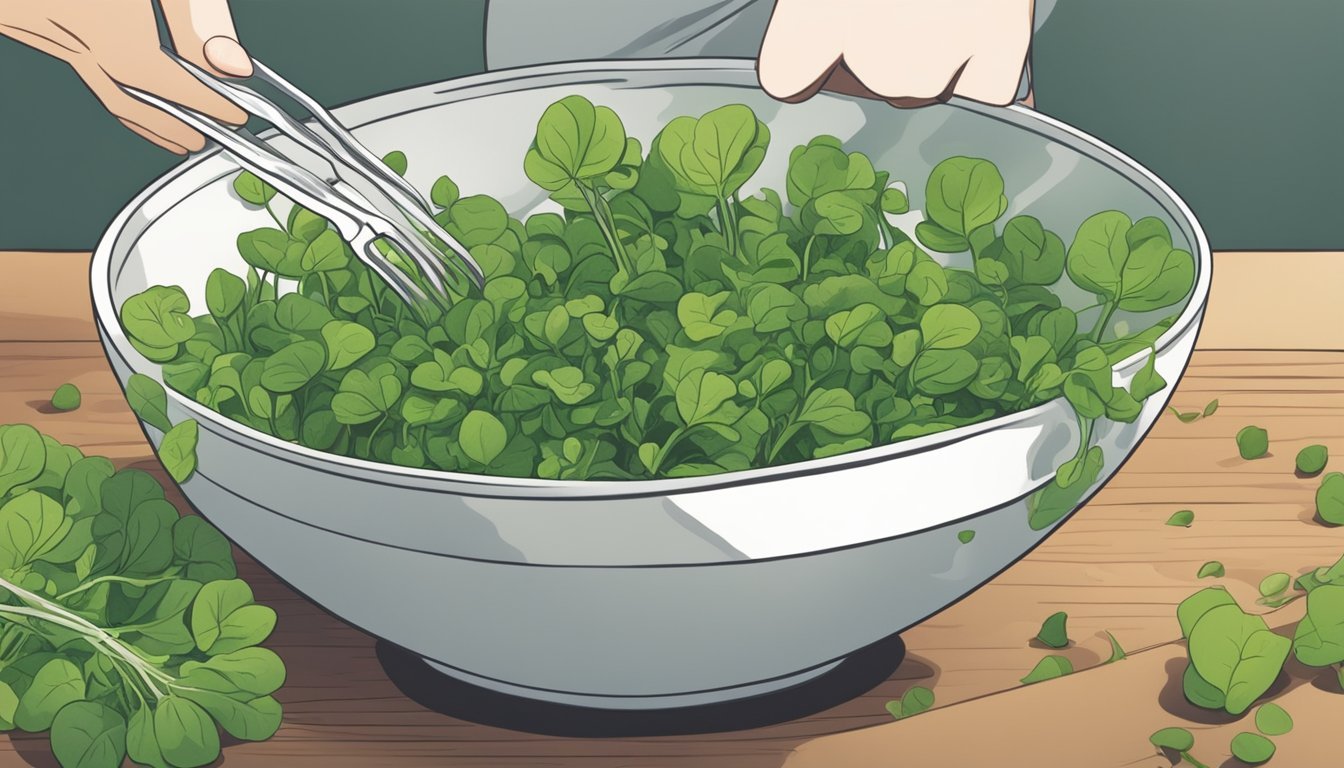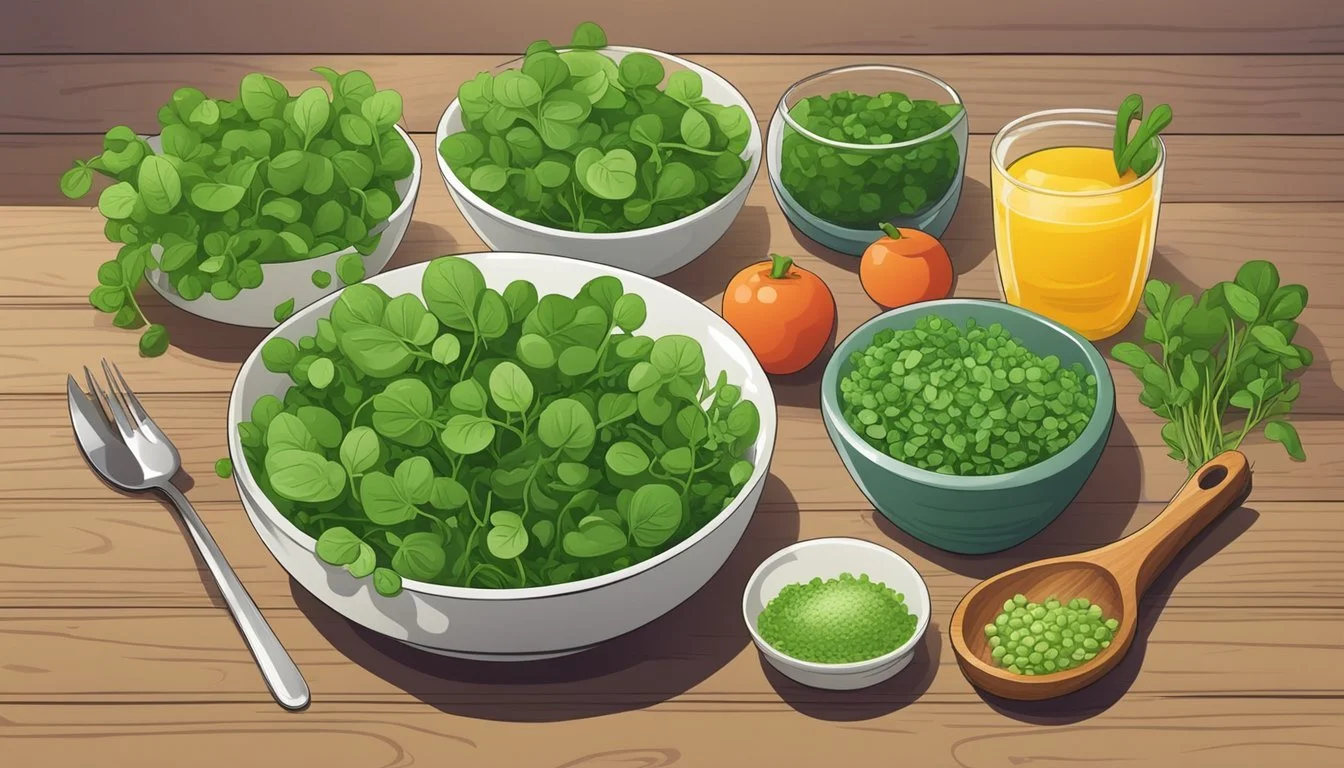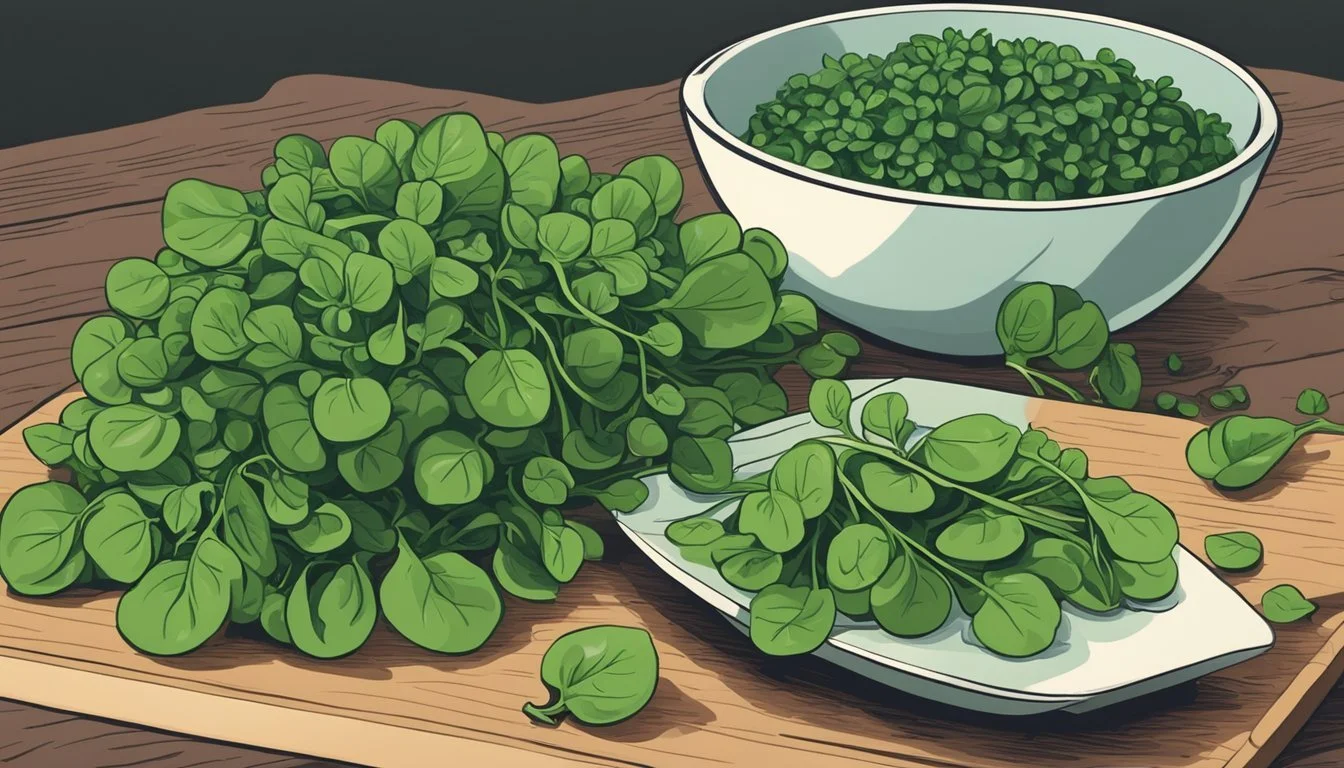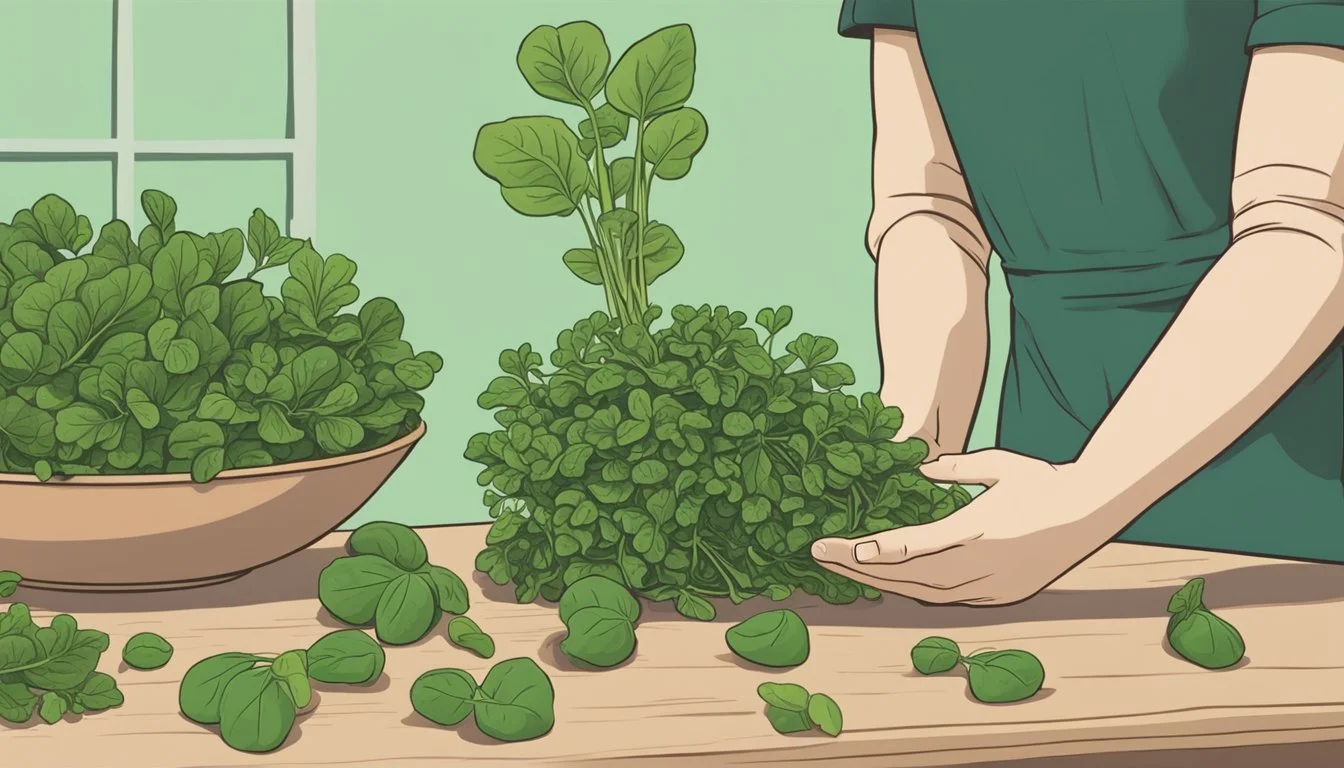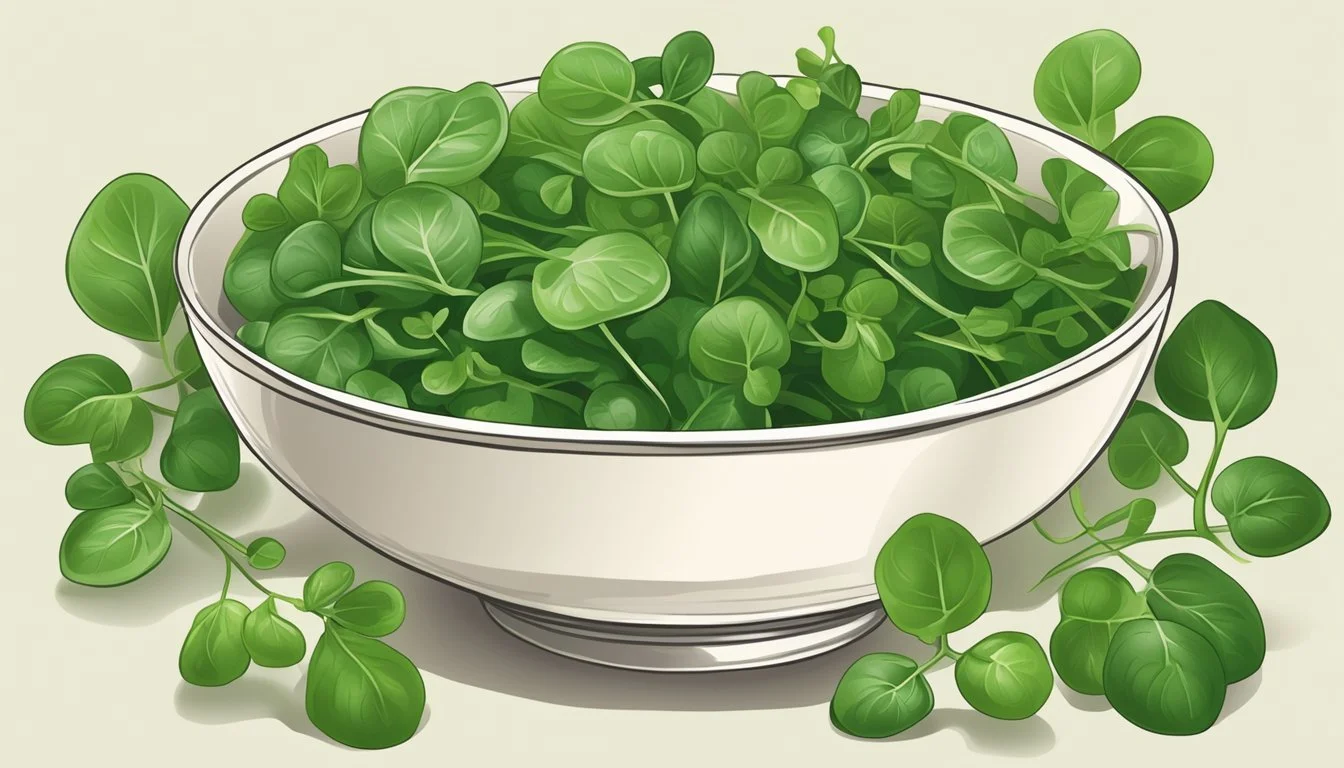How to Substitute Watercress for Spinach
Easy Swap Tips
Watercress, a leafy green known for its peppery flavor, often graces salads (What wine goes well with salads?) , sandwiches (What wine goes well with sandwiches?), and garnishes with its delicate texture and vibrant color. However, its distinctive taste and nutritional profile may not suit every recipe or palate, leading to the need for alternatives. Spinach stands out as a versatile and widely available substitute. Packed with nutrients and possessing a milder taste, spinach can seamlessly adapt to a variety of dishes that typically feature watercress, from smoothies to soups.
While watercress contributes a unique peppery punch to dishes, spinach brings a subtly earthy note that complements ingredients without overpowering them. Individuals who require a watercress substitute due to availability issues or a preference for a less pronounced flavor may find spinach to be an excellent option. It is imperative, however, to understand the texture and taste differences and adjust the cooking method accordingly. For instance, spinach wilts more quickly than watercress and has a more tender texture when cooked.
In an exploration of watercress substitutes, it is essential to take note of the context in which the substitution is occurring. Salads, garnishes, and raw preparations that depend on the crisp, peppery qualities of watercress may be less suited to using spinach, which has a softer leaf when raw. However, in cooked applications where the greens are meant to meld into the dish, spinach can be a nutritious and palatable stand-in. Considering these factors will ensure a successful culinary adaptation, whether one is crafting a family meal or a gourmet delicacy.
Understanding Watercress
Watercress is a nutrient-rich, leafy green that brings a unique peppery flavor to a variety of culinary applications. This section provides detailed insights into its nutritional value, culinary versatility, distinctive taste, health benefits, and guidelines for selection.
Nutritional Profile
Watercress is a nutritional powerhouse, boasting high levels of vitamins A, C, and K, as well as minerals like calcium and iron. It is also a good source of fiber and contains important antioxidants which contribute to its health benefits.
Vitamin A: Essential for eye health and immune function.
Vitamin C: Important for skin, bone, and cardiovascular health.
Vitamin K: Plays a critical role in blood clotting and bone metabolism.
Calcium & Iron: Vital for maintaining strong bones and healthy blood cells.
Culinary Uses
Traditionally found in salads, sandwiches, and soups, watercress also serves as an excellent garnish. Its crisp texture and delicate leaves make it a versatile ingredient in both raw and cooked dishes.
Salads: Adds a peppery excitement.
Sandwiches: Provides a fresh, tasty layer.
Soups/Garnishes: Enhances the dish with a splash of color and a zesty flavor.
Taste and Texture
Watercress has a distinctive peppery flavor that can be a lively addition to bland dishes. Its crisp texture is similar to that of baby spinach, yet remains delicate enough to complement a wide range of recipes without overpowering them.
Health Benefits
The high concentration of antioxidants and vitamins in watercress may contribute to reducing inflammation, oxidative damage, and may help boost the body’s antioxidant defenses. Studies suggest that these properties could support a reduced risk of diseases such as cancer.
Antioxidant Support: Helps protect cells from damage.
Vitamin-Rich: Contributes to overall health maintenance.
Availability and Selection
Watercress is widely available in grocery stores across Asia, North America, and Europe. It typically grows in streams and rivers, which is reflected in the freshness of the leaves when harvested. When selecting watercress, one should look for vibrant, fresh bunches with crisp leaves.
Asia/North America/Europe: Common regions where watercress is available.
Freshness: Leaves should appear healthy and free from wilting or yellowing.
Identifying Spinach Alternatives
When selecting an alternative to spinach, the substitute should ideally complement the flavor profile, match the textural characteristics, and provide a similar nutrient content to ensure a seamless integration into various dishes.
Taste Profiles
Spinach is a leafy green vegetable known for its earthy flavor that can sometimes carry a slightly bitter taste. Watercress is an ideal alternative as it possesses a fresh taste with a slightly spicy flavor profile that can enhance a dish with peppery notes. Unlike the milder bitterness of spinach, watercress' sharpness can be a bold addition to recipes that traditionally use spinach.
Textural Comparisons
Spinach has a soft texture when eaten raw and becomes even softer once cooked. In comparison, watercress has a crunchier texture in its raw state which holds up better during the cooking process, preventing it from turning mushy too quickly. For dishes that require a more pronounced crunch, such as salads or sandwiches, watercress serves as an excellent substitute.
Versatility in Dishes
Both spinach and watercress are incredibly versatile, easily incorporated into a broad range of dishes. While spinach can be used in salads, stews, stir-fries, sandwiches, quiches, (What wine goes well with quiche?) and sauces, watercress can confidently step into these roles, adding its distinctive flavor to salads and sandwiches or contributing to the overall taste of stews and sauces.
Nutritional Equivalence
In terms of nutritional value, both vegetables are rich in vitamins and minerals. Spinach provides an abundance of iron, magnesium, and potassium. Watercress is also nutritionally dense, offering similar levels of vitamins A and C, as well as iron and calcium, making it a suitable substitution when looking to maintain the nutritional benefits of spinach in a diet.
Ease of Substitution
Watercress can be substituted for spinach in equal amounts in most recipes. Due to its more robust structure, it may require slightly less cooking time to avoid over-wilting. When using watercress in place of spinach, consider the intensity of its flavor and the desired texture to determine the best point at which to add it to the cooking process.
How to Substitute Watercress for Spinach
When substituting watercress for spinach, it is important to consider the distinct peppery flavor watercress offers. This can enrich recipes where spinach is traditionally used but may need to be balanced according to personal taste preferences.
In Salads
Flavor Profile: Watercress has a sharp, peppery flavor that can enhance the taste of salads.
Texture: It adds a fresh, crisp texture, similar to arugula.
Substitution: Replace spinach leaf-for-leaf with watercress in salads.
Dressing Considerations: Pair with a dressing that complements its strong flavor, such as a light vinaigrette.
For Cooking
Heat Impact: Watercress wilts quickly under heat, similar to spinach.
Substitution: Substitute equal amounts of watercress for spinach in cooked dishes like soups, stews, or stir-fries.
Flavor Adjustment: Since watercress has a more potent taste, you may want to start with half the amount and add more to taste.
In Sandwiches and Wraps
Texture: Provides a crisp texture to sandwiches and wraps.
Flavor Contribution: The peppery notes of watercress can elevate the overall flavor profile.
Substitution: Use watercress in equal amounts to spinach for a fresh twist in sandwiches and lettuce wraps.
Quantities and Ratios
Direct Substitution: Generally, watercress can be substituted for spinach in a 1:1 ratio in most recipes.
Adjusting to Taste: Due to its pungent flavor, some may prefer to start with half the amount of watercress when substituting for spinach and adjust based on taste preferences.
By keeping these specifics in mind, cooks can confidently use watercress as a substitute in a range of spinach-based dishes without losing the nutritional benefits and while adding a unique peppery kick.
Selecting the Best Substitutes
Selecting the right substitute for watercress involves considering flavor, texture, and nutritional content to maintain the integrity of the dish you're preparing.
By Flavor Profile
When substituting for watercress, flavor is a critical factor. Consider these alternatives based on their taste:
Arugula (Rocket): Offers a peppery flavor similar to watercress, making it an ideal substitute in salads and sandwiches.
Mustard Greens: Provides a spicy kick, which can replicate watercress's signature sharpness in cooked dishes.
Radish Sprouts: These have a spicy taste that can add a peppery note to salads, closely resembling watercress.
By Texture
Texture is also an important consideration. The following can mimic the texture of watercress:
Baby Spinach: Tender and soft, which can replace watercress in recipes that do not rely on a crisp texture.
Kale: Offers a more robust, crisp structure, suitable for soups and stews where a firmer texture is desired.
Lettuce Types (e.g., Butterhead): Have delicate leaves that can substitute for watercress in raw applications.
By Nutritional Content
For those looking to retain the nutritional benefits of watercress, focus on substitutes rich in vitamins, minerals, and antioxidants:
Kale and Collard Greens: High in vitamin C, calcium, and iron, these can serve as a nutrient-dense replacement for watercress.
Beet Greens: Containing calcium, potassium, and manganese, they can act as an alternative with nutritional similarity.
Exploring Watercress Alternatives
When looking for a watercress substitute, consider various options ranging from locally available varieties to those that can be cultivated in a garden or even found in the wild. Each alternative offers a unique taste and nutritional profile suited for different culinary applications.
Local Varieties
In North America, local grocery stores often carry baby spinach and arugula, two leafy vegetables that closely mimic watercress's crisp texture and slightly peppery flavor. These alternatives are readily available and can be used both fresh in salads or cooked in soups and stews.
Arugula: An ideal fresh substitute in salads and sandwiches.
Baby Spinach: Versatile and mild, suitable for both raw and cooked dishes.
Garden Cultivars
For those who prefer homegrown vegetables, upland cress, sometimes known as early yellow rocket, and nasturtium, also known as Indian cress, are excellent choices to cultivate. They are not only flavorful but also a visual delight in the garden.
Upland Cress: Has a sharp, peppery taste similar to watercress.
Nasturtium: Delivers a distinct peppery burst, and its flowers are also edible.
Wild Greens
Dandelion greens and purslane are common wild greens that can be foraged and serve as superb watercress substitutes. Dandelion greens have a slightly bitter taste, which softens with cooking, while purslane is known for its succulence and slight lemony taste.
Dandelion Greens: Best picked young; can be bitter when mature.
Purslane: A tangy, succulent plant that can be eaten raw or cooked.
Supermarket Finds
In Asia and other regions, Chinese cabbage and water spinach are staples in grocery stores and excellent substitutes for watercress. These vegetables offer a fresh crunch and a milder taste, making them versatile in various culinary cultures.
Chinese Cabbage: Mild and slightly sweet, perfect for salads and stir-fries.
Water Spinach: Offers a mild flavor and is commonly used in Asian cuisine.
Recipe Adaptations and Considerations
Substituting spinach for watercress requires careful adjustments to spices and seasonings as well as altering textures to ensure the integrity of the dish is maintained.
Adjusting Spices and Seasonings
When using spinach instead of watercress, one must consider the milder flavor profile of spinach. In dishes like salads or sandwiches, where watercress might typically offer a peppery bite, it's essential to compensate for the flavor difference.
Salads and Dressings: To mimic the spiciness of watercress in salads, add a pinch more of black pepper or a small amount of mustard to the dressing.
Sandwiches: For sandwiches, a light spread of horseradish or wasabi may complement the spinach's softer flavor.
Altering Textures in Dishes
Watercress provides a crunchy texture to dishes, while spinach tends to be softer. Depending on the dish, cooks might need to adjust cooking times or add other ingredients to achieve a desired consistency.
Smoothies and Juices: Spinach blends into smoother, less textured juices and smoothies, compared to the slightly fibrous quality of watercress.
Stews: In stews, watercress is added at the end of cooking to retain some crunch. Spinach wilts quickly, so it should be added just before serving to avoid overcooking.
Crunchy Salad Ingredient: To retain some crunch in salads, consider adding ingredients like sliced radishes or crumbled nuts.
Conclusion
When substituting spinach for watercress, individuals have a range of options that maintain the nutritional value and versatility of their dishes. Spinach itself is a nutrient-dense leafy green, providing vitamins A, C, and K, and can fit seamlessly into recipes typically calling for watercress.
For salads, kale stands out as a robust option, its slightly bitter taste akin to the peppery notes of watercress. It also comes packed with health benefits, including strong vitamin content. In cooked dishes, Chinese cabbage or water spinach might better retain texture and flavor after heating, compared to spinach's softer constitution.
In cuisine where watercress's unique flavor profile is paramount, chefs might opt for arugula, which also brings a peppery zest to the dish. This makes it particularly suitable for sandwiches or burgers where watercress might have been a fresh, zesty layer.
Below is a brief list of substitutes, matching them to appropriate culinary applications:
Substitute Best For Kale Salads, cooked applications Chinese Cabbage Cooked dishes Water Spinach Asian-inspired recipes Arugula Salads, sandwiches
Ultimately, spinach provides the flexibility one needs in a substitute, ensuring dishes retain their healthful qualities and desired flavor profiles without compromising on the overall experience of a meal.
Additional Resources
In this section, readers will find curated resources to aid in perfecting the art of substituting watercress for spinach. It encompasses expert insights and detailed guides, both of which contribute to a deeper understanding of leafy greens' culinary and nutritional profiles.
Expert Tips on Substitution
They can turn to culinary experts who often share their experiences and professional advice on substitution through online videos, blogs, and cooking workshops. These experts may provide specific ratios for substitution, considering factors like taste, texture, and recipe type.
Cooking Workshops: Seek out local classes where chefs demonstrate greens substitution.
Culinary Blogs and Articles: Look for posts that focus on leafy greens' characteristics.
Comprehensive Guides on Leafy Greens
Comprehensive guides and databases can be invaluable when one seeks to understand the nutritional aspects and culinary uses of watercress, spinach, and other leafy greens.
Nutritional Databases: Websites like USDA's FoodData Central provide detailed nutritional information.
Cookbooks: Some cookbooks are dedicated entirely to vegetables, discussing their uses across a variety of dishes.
The resources in this section are aimed at enhancing knowledge and confidence in the kitchen, particularly when working with leafy greens like watercress and spinach.

